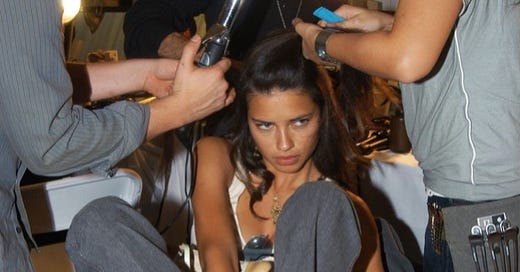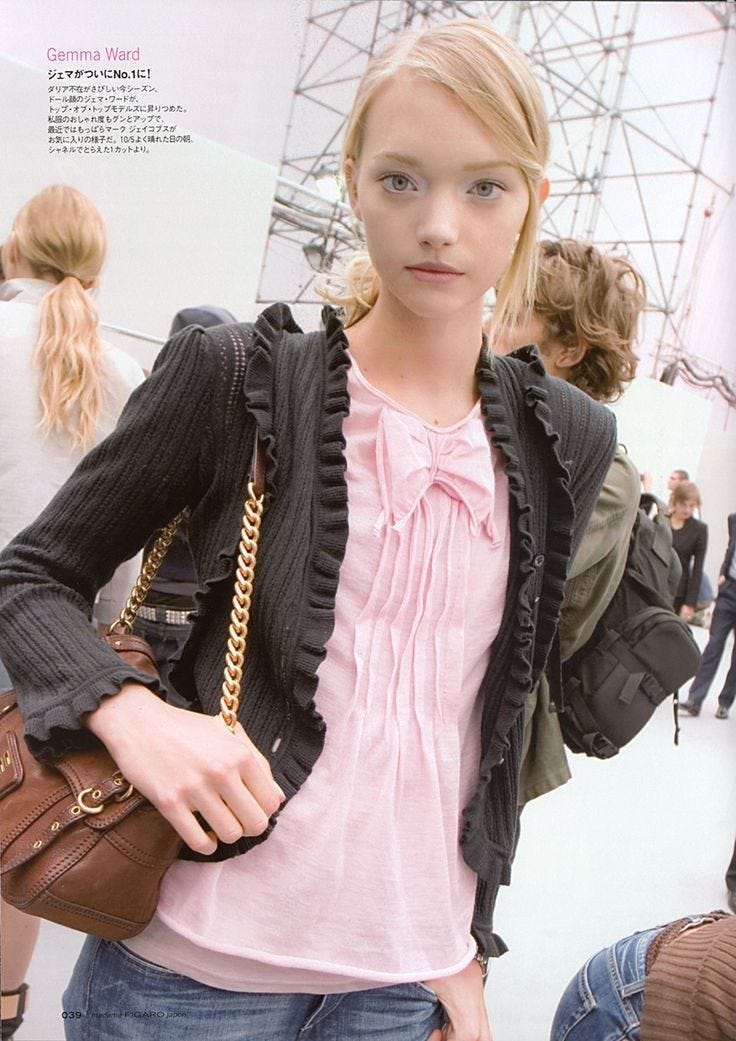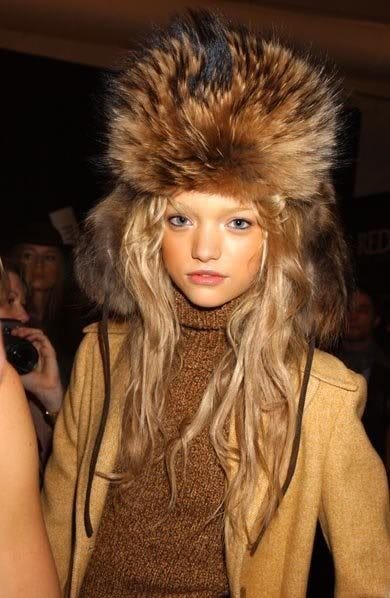Have you ever wondered what the actual reason behind fashion runways is? Why spend so much money on models, extravagant sets, and venues, when you could just promote clothes on social media—or at least use mannequins instead of real people? Maybe it’s not just about clothes. Maybe it’s about inspiring us, or pulling us into a world we’ve never seen before—the world of the designers.
Ever since I started watching runway shows by Prada, Vivienne Westwood, Chanel, and others, I haven’t been able to fully tell what’s meant to be worn and what’s meant to be pure art. Like, I definitely don’t see the spray-paint Coperni runway look as something I’d buy at the mall. But even with designers known for being over-the-top—like Vivienne Westwood—I still find myself picking up inspiration, even from the tiniest details. A scarf. A fabric. A vibe.
The reason I even started questioning all this is because of a fashion YouTuber, @Onionsareleng (or Kat). She made a video breaking down the difference between fashion as art and fashion as, well, too much. She explained that there are two types of runways: artistic and wearable. Like, you’ve got Prada on one end and Vivienne Westwood on the other.
At one point, she asks:
“Do you think runways should be wearable inspiration or purely an art form?”
The obvious answer seems to be wearable, right? I mean, the whole point of fashion shows is to show off outfits that real designers—or people like me—can be inspired by. But then again, there’s the art side. Think spray-paint dresses or Vivienne’s wild, goofy-but-stunning looks. These runways are like moving art exhibits. They’re meant to make you feel something. They’re supposed to leave a mark on you, maybe even change how you see fashion, or the world.
So what’s the real answer? Time to go deeper.
IT’S RESEARCHHH TIMEEEE.
Runways started out pretty straightforward. Back in 1916, Charles Frederick Worth decided to show off his designs on real people instead of mannequins. And just like that, the catwalk was born. Since then, runway shows have evolved—sometimes for the better, sometimes for the drama—but always changing.
Still, that doesn’t answer the question. Because technically, that origin story supports both sides. You can show off creative expression and help people see what’s wearable.
So to really figure it out, we have to go even further—into the minds of the people behind the fashion. What do the designers and models think?
Designers, for the most part, use runway shows to make an impact. It’s like showing the world a piece of their brain. A quick peek into what they’re dreaming about. A good runway show isn’t just about selling clothes—it’s about making a statement.
Vivienne Westwood is the perfect example.
She once said:
“I didn't consider myself a fashion designer at all at the time of punk. I was just using fashion as a way to express my resistance and to be rebellious.”
To her, fashion was never about fitting in. It was about fighting back—making a scene, shaking things up.
Now flip the script. Think about the models. Most of the time, they’re not there to express themselves—they’re there to showcase the clothes. They walk like mannequins, holding poses, casting dramatic glances. Their job is to make sure the clothes stand out. So for them, wearability matters more. They can’t really change up the outfit or throw their own twist into it. They just wear what’s given and strut.
Then there’s us—the viewers, the fans, the social media crowd. What do people think about fashion in the real world?
On TikTok, people dress like they are the runway. And sometimes, they actually are. You’ll find creators layering textures, clashing colors, turning a pair of socks into a full-blown statement. Fashion becomes personality. Mood. Emotion.
But you’ll also find people just following trends. Wearing what’s "in" and calling it a day. There’s nothing wrong with that either—it’s practical, and it’s wearable. It’s the other side of the fashion coin.
‧₊˚♪ 𝄞₊˚⊹
It’s like every opinion I have lives on the edge of a spectrum. Like they’re always meant to exist together, not apart. Even with all the people in the world and all the styles we wear.
So here’s what I think: the real answer is both.
Creativity and wearability can—and should—coexist. Designers get to choose what their art means. Not you. Not me. Even if it’s confusing or hard to understand. That’s the beauty of it.
What’s stopping you from choosing both? What’s stopping you from liking a wild runway piece and a casual hoodie at the same time? Deep down, even with all my rambling, you probably already knew what side you were leaning toward. Or maybe, like me, you couldn’t pick a side at all.
Because if one is silenced, the other loses meaning.
We take inspiration from everything—personal, public, practical, poetic.
We grow new ideas every single day. So why limit ourselves?
Xoxo, rory .







written so brilliantly!!! i love watching runway shows too but i dont know why i never actually thought about this. i remember watching bella hadid getting the dress sprayed on her and just thought oh someone would buy this as like a red carpet look (which is crazy considering it was quite see through). wasnt there a designer who made the runway like a sort of play by sending out the models in half torn and half worn clothing to send out the message of bad quality of clothes in recent years?? OH AND FOR ART, the 4 layers of the human body dresses of robert wun!!! this was an amazing piece, great 1 rori!!